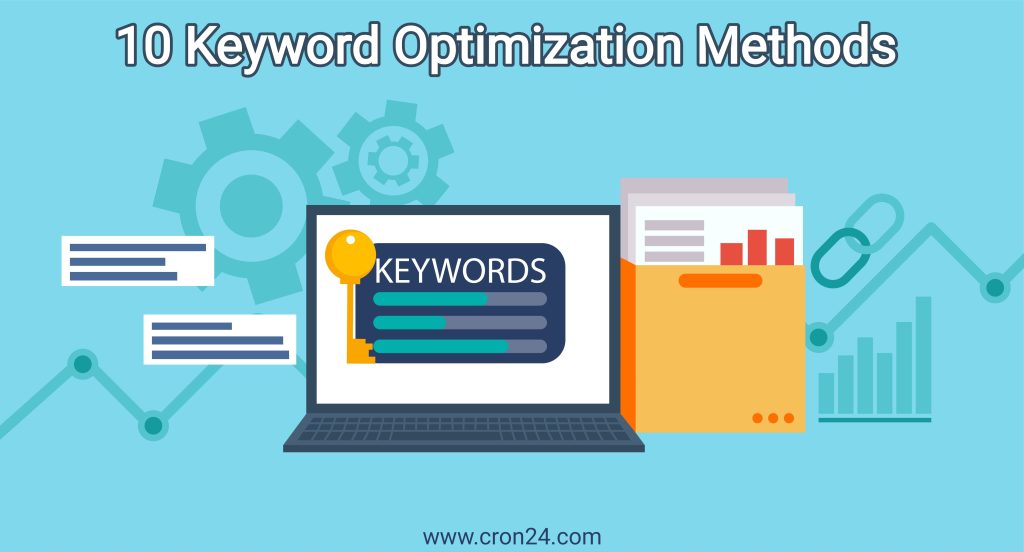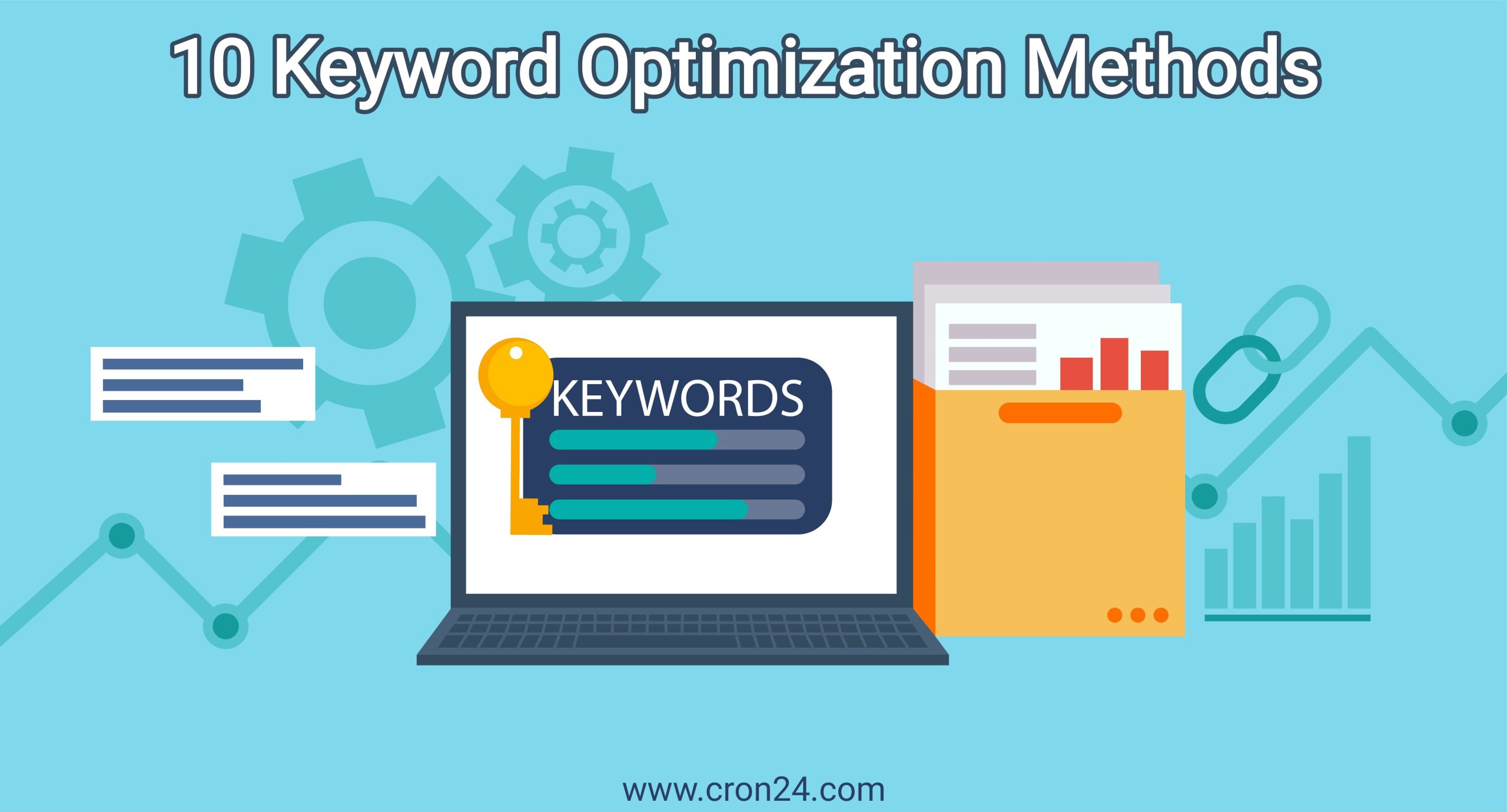Keywords are specific words or phrases that people use when conducting a search on search engines. They represent the main ideas or topics that users are looking for. Keywords are crucial in SEO as they help search engines understand the content and relevance of web pages to deliver accurate search results.
In simply: keywords act as the bridge connecting users to relevant content.

In this blog, we will explore various keyword optimization methods that can boost your organic search engine ranking.
1. Keyword Density:
Keyword density refers to the percentage of times a keyword appears in a piece of content compared to the total number of words. It used to be an important factor in SEO, but search engines now prioritize content quality over specific keyword densities.
For example:
if you have a 500-word article and your target keyword appears 10 times, the keyword density would be 2%.
2. Keyword Clustering:
Keyword clustering involves grouping related keywords into clusters or topic groups based on their semantic meaning.
For Example, if you have a website about fitness, you might create a keyword cluster around “weight loss” that includes keywords like “lose weight fast,” “best exercises for weight loss,” and “healthy weight loss tips.” By organizing these keywords into a cluster, you can create comprehensive content that covers various aspects of weight loss.
3. Keyword Cannibalization:
Keyword cannibalization occurs when multiple pages on a website target the same keyword or a similar set of keywords.
For example, suppose you have two blog posts—one titled “Top 10 Running Shoes for Women” and another titled “How to Choose the Right Running Shoes.” If both articles target the same keyword “running shoes,” search engines may struggle to determine which page to rank for that keyword, potentially leading to lower rankings for both pages.
4. Keyword Stuffing:
Keyword stuffing refers to the practice of excessively and unnaturally inserting keywords into a piece of content to manipulate search engine rankings. An example of keyword stuffing would be repeatedly adding a target keyword without regard for the quality and readability of the content. For example, a sentence like “Looking for affordable shoes? Our affordable shoes are the best affordable shoes you’ll find!” is a clear case of keyword stuffing.
5. Keyword Difficulty:
Keyword difficulty measures the level of competition and effort required to rank for a specific keyword. It considers factors like the number of competitors, their domain authority, and the quality of their content. For example, if you are trying to rank for a highly competitive keyword like “best smartphones,” which is already dominated by authoritative websites, it would have a high keyword difficulty.
6. Keyword Ranking:
Keyword ranking refers to the position of a webpage in the search engine results pages (SERPs) for a specific keyword. For instance, if your webpage ranks in the first position on the SERPs for the keyword “healthy breakfast recipes,” it means your page has achieved a high keyword ranking for that particular search query.
7. Keyword Stemming:
Keyword stemming involves identifying the root or base form of a keyword and including variations of that word. For example, if the base keyword is “run,” stemming variations might include “running,” “ran,” or “runner.” By inserting different forms of the keyword throughout your content, you can help search engines understand the relationship between these variations and improve the relevance and visibility of your webpage for a broader range of related search queries.
8. Keyword Engagement:
Keyword engagement refers to how users interact with search results containing specific keywords. It includes metrics like click-through rate (CTR), time spent on page, and bounce rate. For example, if a webpage ranks well for a keyword and attracts a high CTR, with users spending a significant amount of time engaging with the content, it indicates that the keyword is relevant and engaging for the audience.
9. Keyword Impression:
Keyword impression refers to the number of times a webpage or advertisement appears in search engine results for a specific keyword. It represents the visibility of a webpage or ad for that keyword. For instance, if a webpage has 1,000 impressions for the keyword “digital marketing,” it means it appeared in search results 1,000 times when users searched for that keyword.
10. Keyword Strength:
Keyword strength is a measure of the overall competitiveness and difficulty of ranking for a keyword. It considers various factors such as search volume, competition, and the quality of existing content. High keyword strength indicates that it will be challenging to rank well for that keyword, while low keyword strength suggests a higher chance of ranking higher.
For example, a highly competitive keyword like “real estate” would have strong competition and, therefore, high keyword strength, whereas a long-tail keyword like “luxury beachfront condos in Miami” may have lower competition and lower keyword strength.
These 10 topics in the blog will provide a more comprehensive understanding of keywords and their various important methods that impact on SEO.
These examples illustrate the different aspects and implications of keywords in SEO, showcasing their relevance and impact on search engine rankings and user search experiences.
Thank you.



